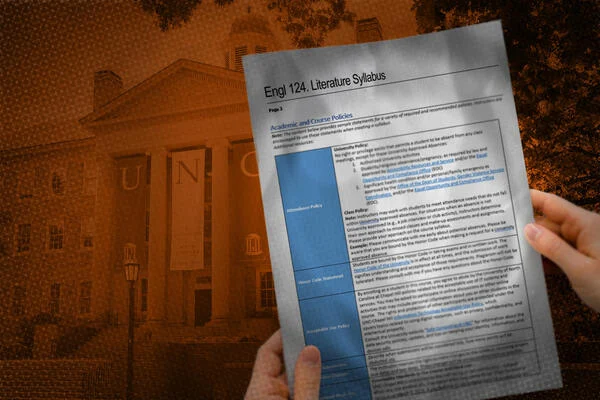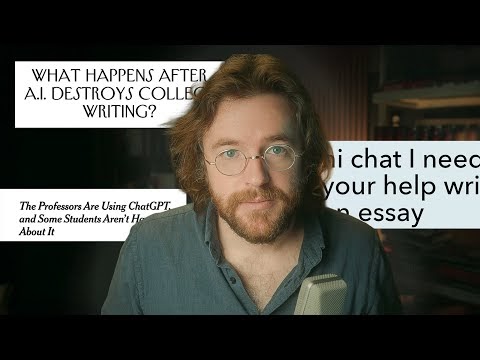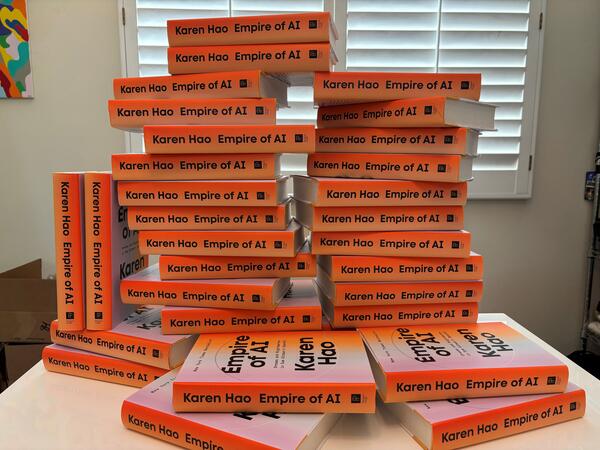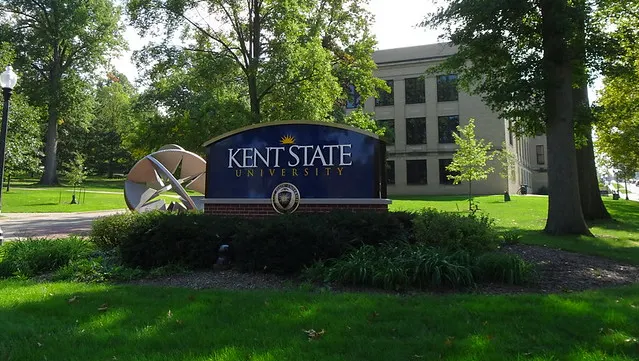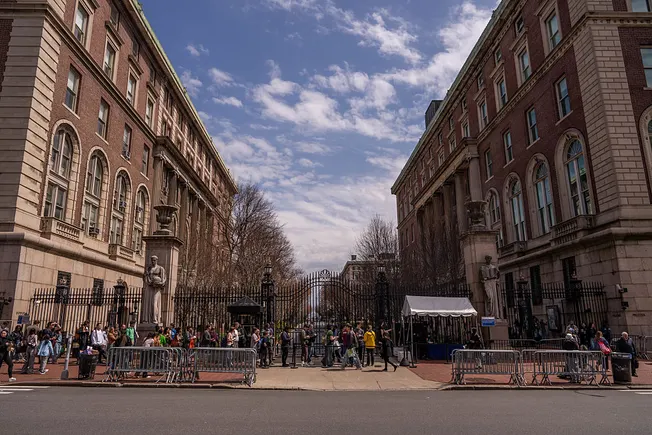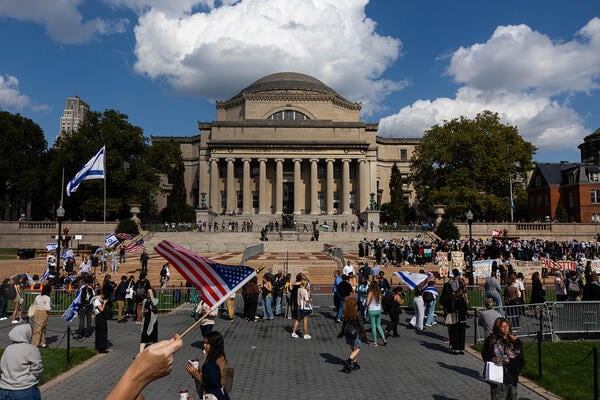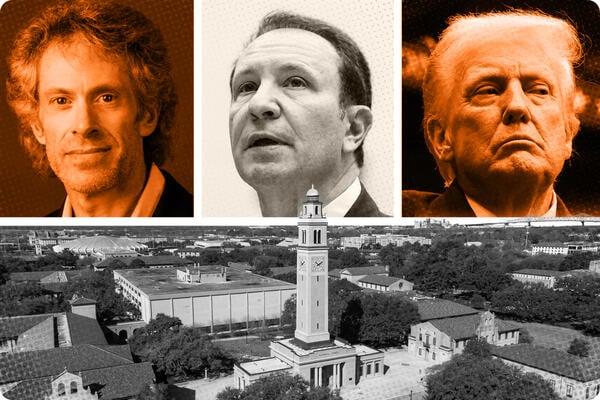The new policy would also classify syllabi as “work made for hire,” which makes the institution—not the syllabus’s creator—the owner of the copyright.
Photo illustration by Justin Morrison/Inside Higher Ed | DNY59 and golibo/iStock/Getty Images
Two months after legal teams at University of North Carolina system campuses split over whether syllabi are considered public documents, system president Peter Hans announced plans to adopt a new policy that will answer an unequivocal yes.
Starting as early as next fall, faculty members at UNC institutions will be required to upload their syllabi to a searchable public database, according to a draft of the policy provided to Inside Higher Ed by student journalists at The Daily Tar Heel. These public syllabi must include the course name, prefix, description, course objectives and student learning outcomes, as well as “a breakdown of how student performance will be assessed, including the grading scale, percentage breakdown of major assignments, and how attendance or participation will affect a student’s final grade.” Faculty must also include any course materials that students are required to purchase.
“Public university syllabi should be public records, and that will be the official policy of the UNC System,” Hans wrote in a Thursday op-ed in the News & Observer. “We are living through an age of dangerously low trust in some of society’s most important institutions. While support for North Carolina’s public universities remains strong and bipartisan, confidence in higher education generally has dropped in recent years, driven by concerns about value and a perception that some colleges and universities have drifted from their core mission.”
The system is currently seeking feedback on the draft policy, a system spokesperson told Inside Higher Ed, and “after receiving input from elected faculty representatives and other stakeholders, the system office will revise the draft as needed.” Only Hans, and not the Board of Governors, will need to approve the policy.
In October, system campuses disagreed over whether to give up syllabi in response to a broad public records request by the Heritage Foundation’s Oversight Project. Alongside other conservative groups, the Heritage Foundation has used open records laws to gather information on and expose public university faculty members who teach about race, gender, sexuality and the Israeli-Palestinian conflict. Syllabi that include classroom policies, required readings and instructor’s names are particularly valuable to conservative critics. The UNC system flagship in Chapel Hill determined that syllabi are not automatically subject to such requests. But officials at the University of North Carolina at Greensboro declared the opposite.
“Having a consistent rule on syllabi transparency, instead of 16 campuses coming up with different rules, helps ensure that everyone is on the same page and similarly committed heading into each new semester,” Hans wrote in his op-ed.
The Florida Board of Governors recently enacted a policy that makes syllabi, required or recommended textbooks, and instructional materials available online and searchable for students and the general public for five years. Indiana, Texas and the University System of Georgia also maintain similar rules.
Belle Boggs, an English professor at North Carolina State University and president of the North Carolina American Association of University Professors chapter, is worried that many professors, busy with end-of-semester grading, are unaware of the forthcoming policy; administrators have yet to send out any formal announcement of the rule, Boggs said. But many of those that do know of it are pushing back. A petition started by the North Carolina AAUP chapter has garnered more than 2,100 signatures as of Thursday afternoon. The group plans to deliver it in person to Hans on Friday.
The draft policy does not explicitly require instructors to list their names on their syllabi and states that “nothing within this regulation shall be construed to require a publicly available syllabus to include the location or time of day at which a course is being held.” This stipulation provides little comfort to faculty members, Boggs said.
“As many of us have noted, there are many of us who are the only faculty who teach a particular class, and it is very easy to find out when our class is and where our classes are,” she said. “That does not make me feel safer.”
Hans acknowledged critics’ weaponization of syllabi in his op-ed.
“There is no question that making course syllabi publicly available will mean hearing feedback and criticism from people who may disagree with what’s being taught or how it’s being presented. That’s a normal fact of life at a public institution, and we should expect a vibrant and open society to have debates that extend beyond the walls of campus,” Hans wrote. “It’s awful that we live in a time when healthy discussion too often descends into outright harassment. We will do everything we can to safeguard faculty and staff who may be subject to threats or intimidation simply for doing their jobs.”
The new policy would also classify syllabi as “work made for hire,” which makes the institution—not the syllabus’s creator—the copyright owner of the syllabus, according to U.S. copyright law.
“As such, instructors do not retain personal copyright in these materials, and syllabi owned by a public agency generated in the course of public business, are not copyrightable in a manner that would exempt syllabi from public access to these records, consistent with state and federal public records laws,” the draft policy stated.
The N.C. AAUP has focused its efforts on publicizing faculty safety concerns, but the work-made-for-hire provision is also worrisome, Boggs said.
“That causes severe damage to academic freedom and how much control we have over our classes,” she said. “It may also make many faculty not want to work here, because the syllabi that they teach from or the syllabi that they’ve honed over decades in other places … [will belong to the university].”

